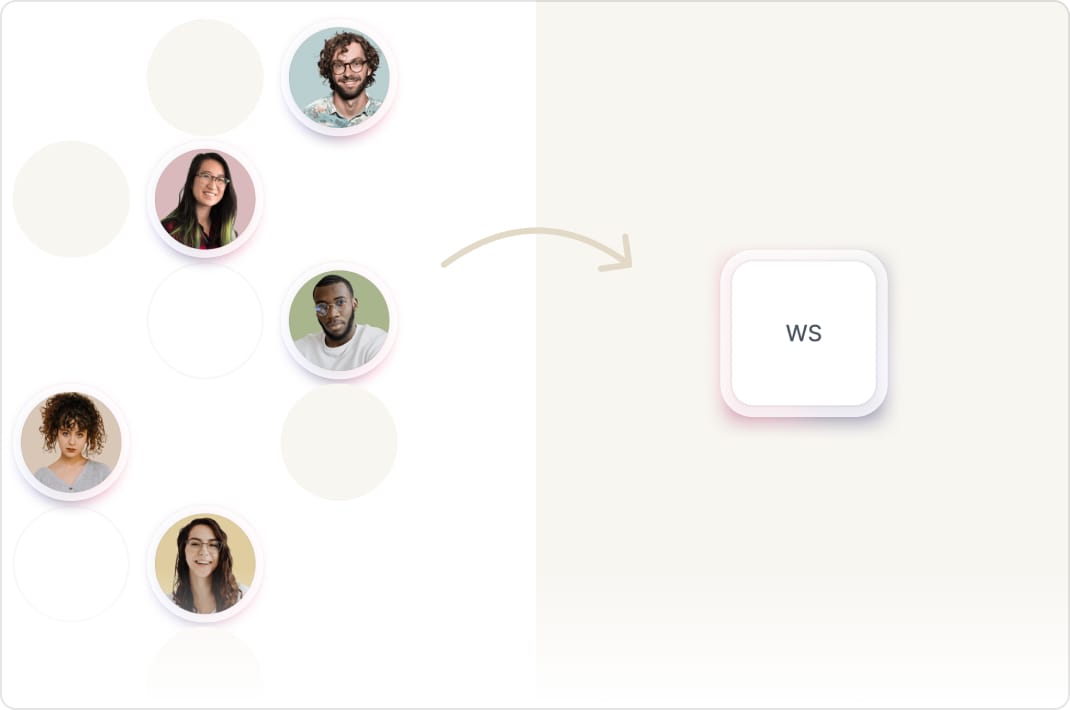Learn how to handle conflict at work | Comparisons
Workplace conflict doesn't have to feel overwhelming. With Marlee's Comparison boards, you can quickly uncover the root cause of team tension and transform difficult workplace relationships. Find out how understanding different work styles can turn conflict into an opportunity for growth.
- Author
 Bethany Cutmore Scott
Bethany Cutmore Scott

Why we clash: Understanding work styles and conflict
Your last team meeting ended in tension. Again. But what if those recurring conflicts weren't about difficult personalities but about different motivational wiring? Our research into 48 workplace motivational traits reveals why some working relationships feel like a constant uphill battle – and how to change that dynamic.
Let's look at how these different styles can create friction and, more importantly, how understanding them can transform conflict into collaboration.
When work styles collide
Our research shows that conflicts often arise between people with opposing motivational traits. For example, someone with high "action level" motivation (self-starters who love diving into new projects) might clash with a colleague who scores high on "methodical" traits (preferring careful planning and systematic approaches). Neither style is wrong – they're just different approaches to achieving goals.
Another common tension occurs between "big picture thinkers" and those with strong "attention to detail" traits. While one person focuses on vision and possibilities, the other zeroes in on specifics and potential issues. This natural tension can lead to conflict or, when understood properly, create a powerful complementary dynamic.
Sometimes conflict stems from something even more fundamental: our different learning and communication styles. One team member might need visual aids and written documentation to fully engage, while another processes best through discussion and verbal exploration. When these styles collide without understanding, simple information sharing can become frustrating.

A Marlee 1 to Many Comparison board showing how people are convinced (1 to Many board coming soon!)

A Marlee 1 to 1 Comparison board showing the greatest differences
Using data to bridge differences
This is where Marlee's 1 to 1 comparison board becomes invaluable. The board allows you to visualize your work style alongside a colleague’s, highlighting similarities and differences. The top two widgets specifically show your strongest areas of alignment and your biggest potential friction points.

A Marlee 1 to 1 comparison board showing similarities and differences
For instance, if you discover you both score highly on "goal-oriented" traits, that's common ground you can build on. If you have opposing scores on "need for structure" versus "out of the box thinking," that awareness helps explain past tensions and guides future interactions.
Team dynamics: The bigger picture
For broader team conflicts, Marlee's 1 to Many board (coming soon!) provides a bird's-eye view of how different work styles interact across your team. This board helps identify patterns – like whether certain conflicts stem from having too many similar styles (everyone wanting to lead) or too many opposing approaches (planners versus improvisers).

A Marlee 1 to Many Comparison board showing similarities and differences (1 to Many board coming soon!)
Turning insights into action
Here's how to use these insights practically:
- Start with similarities: When tension arises, check your 1 to 1 board's top similarity widget first. This shared ground becomes your bridge for difficult conversations.
- Reframe differences: Instead of seeing opposing styles as obstacles, treat them as complementary strengths. A detail-oriented teammate can help strengthen a big-picture thinker's plans.
- Predict and prevent: Use your insight boards to anticipate potential friction points. If you know your colleague values methodical planning, send them a meeting agenda before impromptu brainstorming sessions.
Creating psychological safety
Understanding these motivational differences helps create psychological safety – that crucial feeling that it's okay to be yourself at work. When team members understand that their colleagues' different approaches stem from innate motivational traits rather than personal attacks, defensiveness naturally decreases.
Practical tips for different styles
Based on your 1 to 1 board insights, try these approaches:
- Working with a highly analytical colleague? Lead with data and logical frameworks rather than emotional appeals.
- Collaborating with someone who scores high on "commercial awareness"? Frame discussions around business impact and ROI.
- Partnering with a strong "people orientation" score? Build in time for relationship-building and consider the human impact of decisions.
The path forward
Workplace conflict doesn't have to be a negative experience. By understanding the motivational traits driving our different approaches, we can transform these moments into opportunities for deeper understanding and more effective collaboration.
Remember, the goal isn't to change anyone's natural work style – it's to build awareness that helps us work together more effectively. Next time you feel tension building with a colleague, take a moment to check your comparison boards. The insights you find might just turn that potential conflict into a breakthrough moment for both of you.
Want to understand your own motivational traits better?
Start for free with Marlee

.jpg)
